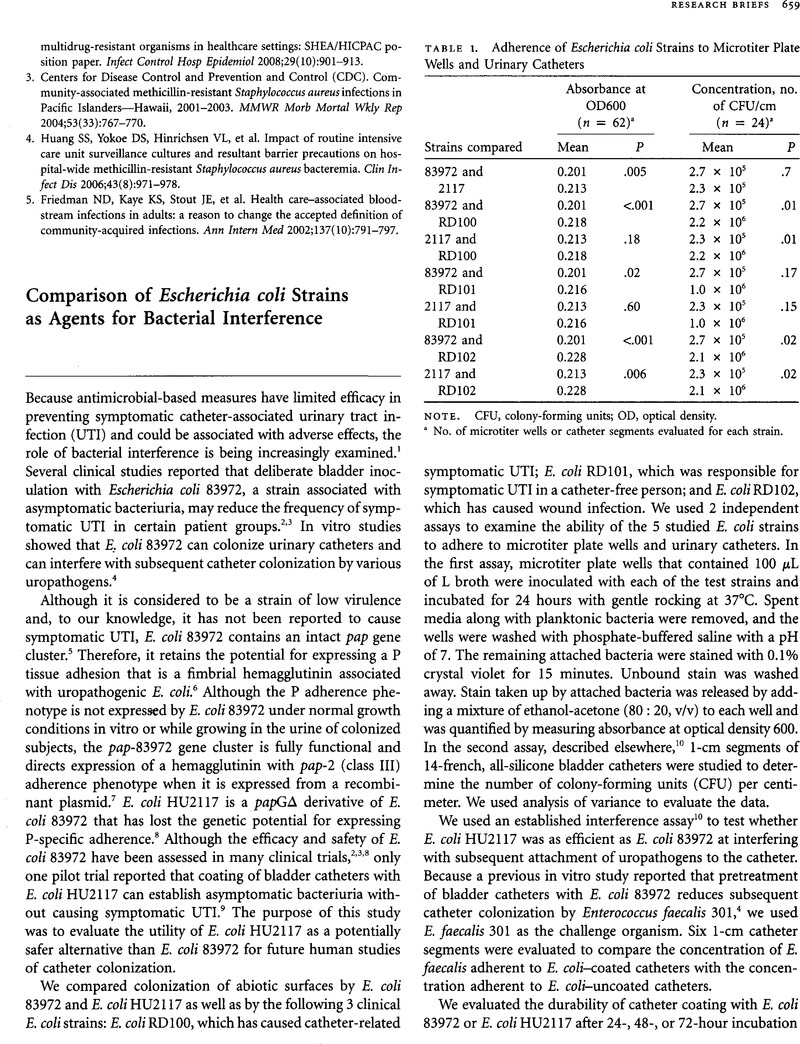Crossref Citations
This article has been cited by the following publications. This list is generated based on data provided by Crossref.
Lopez, Analette I.
Kumar, Amit
Planas, Megan R.
Li, Yan
Nguyen, Thuy V.
and
Cai, Chengzhi
2011.
Biofunctionalization of silicone polymers using poly(amidoamine) dendrimers and a mannose derivative for prolonged interference against pathogen colonization.
Biomaterials,
Vol. 32,
Issue. 19,
p.
4336.
Darouiche, Rabih O.
Green, Bruce G.
Donovan, William H.
Chen, David
Schwartz, Michael
Merritt, John
Mendez, Michelle
and
Hull, Richard A.
2011.
Multicenter Randomized Controlled Trial of Bacterial Interference for Prevention of Urinary Tract Infection in Patients With Neurogenic Bladder.
Urology,
Vol. 78,
Issue. 2,
p.
341.
Darouiche, R. O.
and
Hull, R. A.
2012.
Bacterial Interference for Prevention of Urinary Tract Infection.
Clinical Infectious Diseases,
Vol. 55,
Issue. 10,
p.
1400.
Zhu, Zhiling
Wang, Jun
Lopez, Analette I.
Yu, Fei
Huang, Yongkai
Kumar, Amit
Li, Siheng
Zhang, Lijuan
and
Cai, Chengzhi
2015.
Surfaces presenting α-phenyl mannoside derivatives enable formation of stable, high coverage, non-pathogenic Escherichia coli biofilms against pathogen colonization.
Biomaterials Science,
Vol. 3,
Issue. 6,
p.
842.
Zhu, Zhiling
Yu, Fei
Chen, Haoqing
Wang, Jun
Lopez, Analette I.
Chen, Quan
Li, Siheng
Long, Yuyu
Darouiche, Rabih O.
Hull, Richard A.
Zhang, Lijuan
and
Cai, Chengzhi
2017.
Coating of silicone with mannoside-PAMAM dendrimers to enhance formation of non-pathogenic Escherichia coli biofilms against colonization of uropathogens.
Acta Biomaterialia,
Vol. 64,
Issue. ,
p.
200.
Falcou, L.
Davido, B.
Even, A.
Bouchand, F.
Salomon, J.
Sotto, A.
Denys, P.
and
Dinh, A.
2018.
Stratégie préventive originale des infections urinaires symptomatiques chez les patients porteurs d’une vessie neurologique : l’interférence bactérienne, état de l’art.
Progrès en Urologie,
Vol. 28,
Issue. 6,
p.
307.
Learman, Brian S.
Brauer, Aimee L.
Eaton, Kathryn A.
Armbruster, Chelsie E.
and
Whiteley, Marvin
2019.
A Rare Opportunist,
Morganella morganii
, Decreases Severity of Polymicrobial Catheter-Associated Urinary Tract Infection
.
Infection and Immunity,
Vol. 88,
Issue. 1,
Kenneally, Ciara
Murphy, Craig P.
Sleator, Roy D.
and
Culligan, Eamonn P.
2024.
Turbidimetric bioassays: A solution to antimicrobial activity detection in asymptomatic bacteriuria isolates against uropathogenic Escherichia coli.
MicrobiologyOpen,
Vol. 13,
Issue. 3,
Kenneally, Ciara
Murphy, Craig P.
Sleator, Roy D.
and
Culligan, Eamonn P.
2024.
Genotypic and phenotypic characterisation of asymptomatic bacteriuria (ABU) isolates displaying bacterial interference against multi-drug resistant uropathogenic E. Coli.
Archives of Microbiology,
Vol. 206,
Issue. 10,



